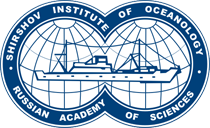Expedition "Abkhazia-2022", dedicated to the study of small river plumes, was held from April 25 to May 1 under the leadership of DSc Alexander Osadchiev.
This is the fifth expedition supported by the Russian Science Foundation in the coastal waters of Abkhazia over the past five years, which is being carried out by the Shirshov Institute of Oceanology within the framework of the Russian Science Foundation project 18-17-00156 to study the influence of continental runoff on hydrophysical processes and water quality in the Black Sea.
Employees of the IO RAS, CMI MSU, Bauman MSTU, Lomonosov Moscow State University and St. Petersburg State University took part in the field work. Expedition work continued long-term studies of small river plumes in the Black Sea, which have been carried out by the staff of the Laboratory of Land-Ocean Interaction and the Anthropogenic Impact of the IO RAS since the mid-2000s.
This year, the expedition took place in the estuary zone of the Bzyb River, one of the two largest rivers in Abkhazia, during the spring flood. The main scientific task of the expedition was to study the dynamic processes at a clear boundary between the river plume and the sea, namely the formation of the Rayleigh-Taylor and Kelvin-Helmholtz instabilities.
In simple words: we studied a clear boundary between the plume and the sea, which is clearly visible in the pictures from the quadrocopter, and searched for answers to common questions - Why is the boundary so clear? Why do undulating structures form at the border? What does this clear border look like from below, what is its three-dimensional shape? How does the transfer of salt and suspension between the plume and the sea through this boundary take place?
To study the indicated range of issues, both traditional CTD measurements and new methods for studying processes in the coastal zone of the sea were carried out, namely, aerial photography using quadrocopters, video shooting using a remotely controlled uninhabited underwater vehicle (ROV), georadar location of the surface layer of the sea using georadar. The results obtained are fundamentally important for understanding the process of propagation and mixing of river runoff in the sea and will be published in the coming months in leading oceanological journals.
https://ioran.ocean.ru/en/index.php/novosti-instituta/1112-abkhaz-expedition-of-the-io-ras#sigProIdf9d9e30e5c




